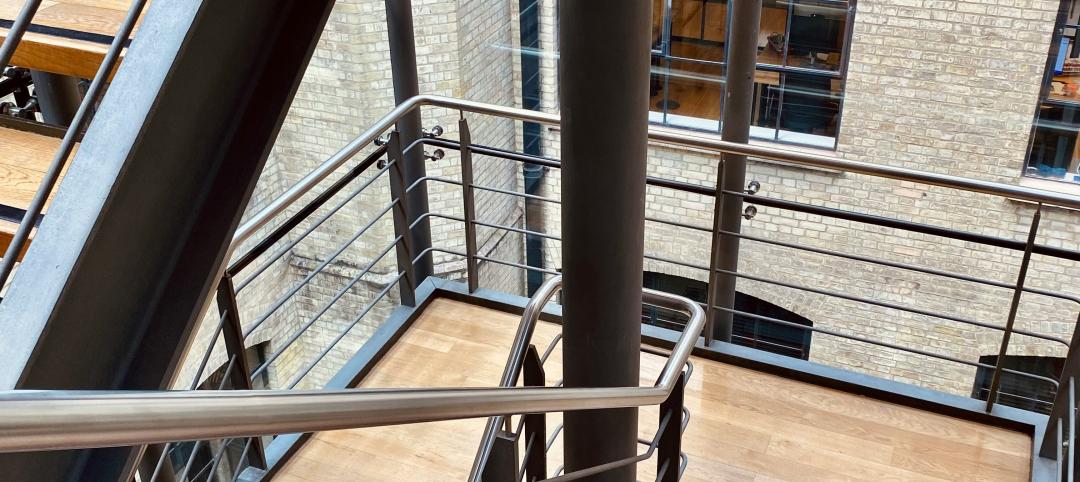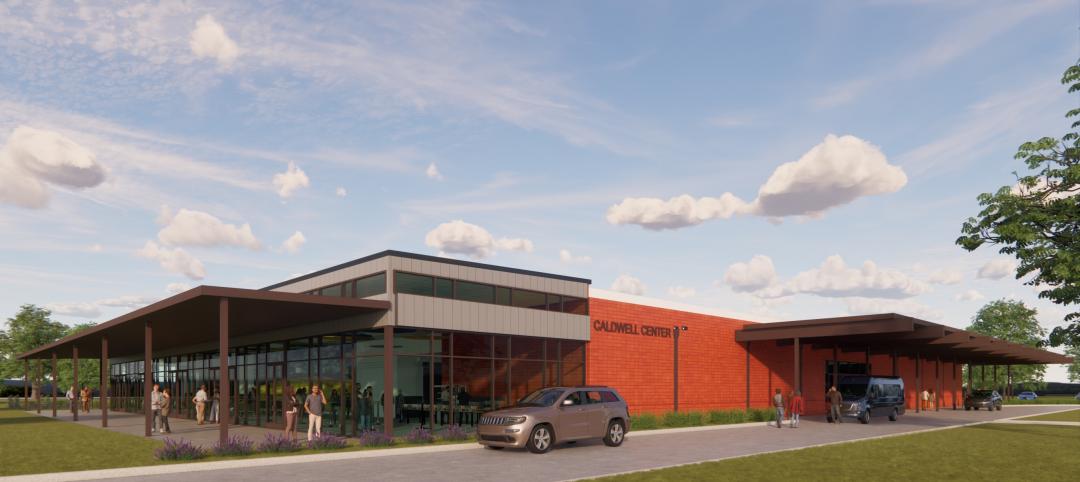After nearly half a century of use, Southminster Presbyterian Church’s steel window frames and single glass pane windows were in deplorable condition.
“About all they did was keep the rain and snow out but they let in all the heat and all the cold all of the time,” said the Rev. Dr. Daniel B. Merry, senior pastor, Southminster Presbyterian Church in Mt. Lebanon, a Pittsburgh suburb.
New windows would need to not only stand the test of time, but also accommodate the aesthetics of an architecturally historic church. The Norman Gothic style church was originally designed by renowned architect Thomas Pringle and built in 1928. An additional wing for educational programs and offices was added in the early 1950s. The educational wing includes the approximately 350 steel frame windows that needed to be replaced.
After receiving several bids from different companies, the Rev. Merry and Southminster Presbyterian Church chose GThurm windows from Graham Architectural Products.
“We thought GThurm windows were the best insulating window, and far superior to aluminum windows and their insulation value,” said the Rev. Merry. “We believe it is cutting-edge technology. We’d rather be on the front of the curve than the back of the curve.”
Graham Architectural Products’ GThurm high-efficiency windows are the first American-made, architecturally rated windows (AW) to feature thermal transmission measures as low as U 0.15 (R 7) using readily available insulating glass. The window lineals, which were created using the G2RP glass-reinforced polyurethane pultrusion process, offer improved dimensional stability, durability, thermal insulation and environmental friendliness over traditional windows. The polyurethane used to produce G2RP reinforced glass fibers is a unique polyurethane resin supplied by Bayer MaterialScience LLC that contains no volatile organic compounds (VOCs). Graham Architectural Products is a member of Bayer’s EcoCommercial Building (ECB) Network that strives to make net-zero energy buildings possible by bringing together leading companies that provide state-of-the-art product and service technologies.
“One of the primary benefits of the GThurm material technology is the lack of heat conduction,” said Jim Eisenbeis, director of marketing, Graham Architectural Products. “Aluminum is 700 times more heat conductive than our material, which is bad if you want to keep heat in or out of the building.”
Harry George, manager, new markets, Bayer MaterialScience LLC, said: “In this project, replacing the window frames alone provides significantly better thermal conductivity than the old steel frames. The GThurm product provides a more energy efficient window than a thermally broken aluminum window, or a steel frame window.”
Gibsonia, Pa.-based Windows Systems Inc. removed the old windows and installed the new models. The steel casement windows, originally installed with a fin that goes between the exterior stone and interior block wall, required an elaborate removal process, said Drake Core, vice president, Window Systems Inc.
One of the most important challenges was retaining the sight lines of the building even as the church requested a reduction of operable windows with fixed windows.
“This created a sight line issue,” Core said. “If one window opens and another one doesn’t, that affects the look from the outside due to the differing thickness. We downsized the fixed window and added to it so that it replicates an operable window and maintains a uniform appearance.”
Additionally, the presence of an on-site daycare facility required the installers to meet federal “renovate, repair, paint” regulations for lead paint. Core and his team went a step further and hired an outside consulting firm to monitor air quality and surfaces during and after the installation.
With those challenges solved, the installation of the new windows was cut and dried, he said. “It’s pretty much the same installation process as traditional aluminum windows,” Core said.
The newly installed windows offered an unexpected benefit for those who work in the church offices. The church is located at the corner of a busy main street and a cobblestone road. Two elementary schools and an emergency services department with a loud siren are also nearby. As such, the ambient neighborhood noise was often evident to people inside the church.
“After the project was completed, the first thing I noticed was the sound,” said the Rev. Merry. “The GThurm windows are so tight and well insulated that the quiet in the office and educational areas was immediately noticeable.
“And when the heat index soared to higher than 100 degrees for several days during a July 2011 heat wave, the offices with air conditioning units absolutely stayed cooler with the new windows than they had with the previous steel casement windows.”
Additionally, the windows provide not only improved insulation value but also superior strength. This is achieved through a pultrusion process in which 80 percent continuous stranded glass content is combined with 20 percent resin to produce window lineals, Eisenbeis explained.
Polyurethane chemistry offers many benefits over the chemistries traditionally used in the pultrusion process. Not only can polyurethane chemistries be customized on a project-by-project basis to provide greater strength, as well as better working and performance characteristics than polyesters, vinyl esters and epoxies; polyurethane resins are also free of the hazardous styrene emissions common to polyesters and vinyl esters.
Unlike traditional fiberglass window lineals, the GThurm window lineals pultruded with the G2RP require no additional reinforcement for structural integrity. The unique process allows for lightweight framing with superior structural performance and a thermal performance nearly triple that of ordinary architecturally-rated window products. The production of GThurm lineals is expected to use less energy per pound of raw materials than comparable aluminum designs, supporting a sustainable design.
“As government regulations ratchet up requirements for window insulation values, it will be increasingly difficult to install aluminum windows and meet requirements,” said Core. “The Southminster Presbyterian Church project demonstrates the viability of this new window technology.” +
Related Stories
Architects | Aug 28, 2024
KTGY acquires residential high-rise specialist GDA Architects
KTGY, an award-winning design firm focused on architecture, interior design, branded environments and urban design, announced that it has acquired GDA Architects, a Dallas-based architectural firm specializing in high rise residential, hospitality and industrial design.
K-12 Schools | Aug 26, 2024
Windows in K-12 classrooms provide opportunities, not distractions
On a knee-jerk level, a window seems like a built-in distraction, guaranteed to promote wandering minds in any classroom or workspace. Yet, a steady stream of studies has found the opposite to be true.
Building Technology | Aug 23, 2024
Top-down construction: Streamlining the building process | BD+C
Learn why top-down construction is becoming popular again for urban projects and how it can benefit your construction process in this comprehensive blog.
Airports | Aug 22, 2024
Portland opens $2 billion mass timber expansion and renovation to its international airport
This month, the Portland International Airport (PDX) main terminal expansion opened to passengers. Designed by ZGF for the Port of Portland, the 1 million-sf project doubles the capacity of PDX and enables the airport to welcome 35 million passengers per year by 2045.
Adaptive Reuse | Aug 22, 2024
6 key fire and life safety considerations for office-to-residential conversions
Office-to-residential conversions may be fraught with fire and life safety challenges, from egress requirements to fire protection system gaps. Here are six important considerations to consider.
Resiliency | Aug 22, 2024
Austin area evacuation center will double as events venue
A new 45,000 sf FEMA-operated evacuation shelter in the Greater Austin metropolitan area will begin construction this fall. The center will be available to house people in the event of a disaster such as a major hurricane and double as an events venue when not needed for emergency shelter.
Cultural Facilities | Aug 21, 2024
Baltimore’s National Aquarium opens 10,000-sf floating wetland that mimics the harbor’s original tidal marsh habitat
The National Aquarium in Baltimore has opened the National Aquarium Harbor Wetland, a 10,000-sf floating wetland that mimics the Inner Harbor’s original Chesapeake Bay tidal marsh habitat. Located between Piers 3 and 4 on Baltimore’s Inner Harbor, the $14 million project features more than 32,000 native shrubs and marsh grasses.
Mixed-Use | Aug 21, 2024
Adaptive reuse of a Sears store becomes luxury mixed-use housing
6 Corners Lofts at 4714 W Irving Park Road, Chicago, Ill., opened in March of 2024 as a 394,000-sf adaptive reuse project born out of a former Sears store.
Building Materials | Aug 19, 2024
Federal 'buy clean' construction materials label program unveiled
The U.S. Environmental Protection Agency announced a plan for implementing a new label program to boost American production of more climate-friendly construction materials and products. The label program will prioritize steel, glass, asphalt and concrete.
Museums | Aug 19, 2024
The Tampa Museum of Art will soon undergo a $110 million expansion
In Tampa, Fla., the Tampa Museum of Art will soon undergo a 77,904-sf Centennial Expansion project. The museum plans to reach its $110 million fundraising goal by late 2024 or early 2025 and then break ground. Designed by Weiss/Manfredi, and with construction manager The Beck Group, the expansion will redefine the museum’s surrounding site.
















